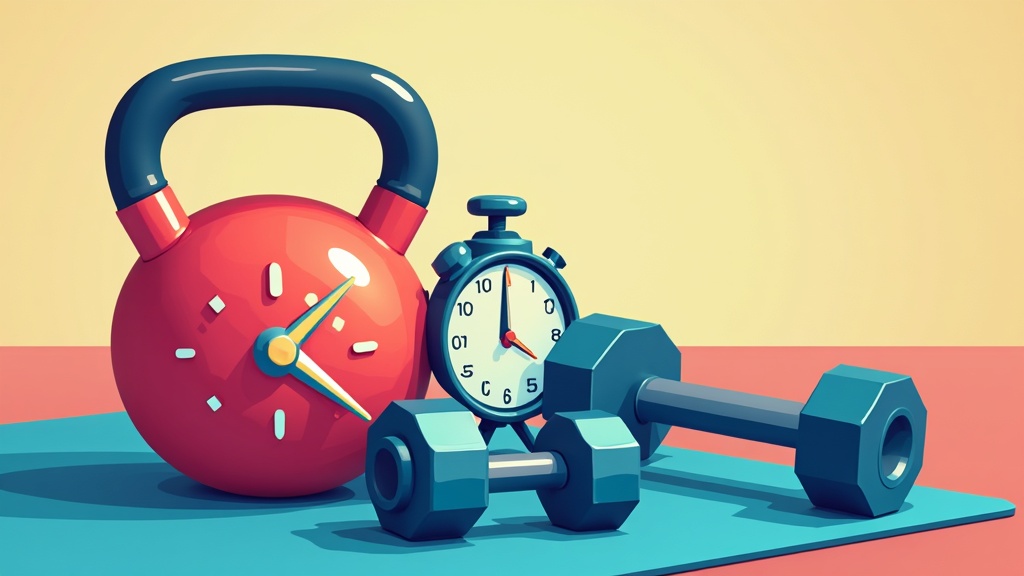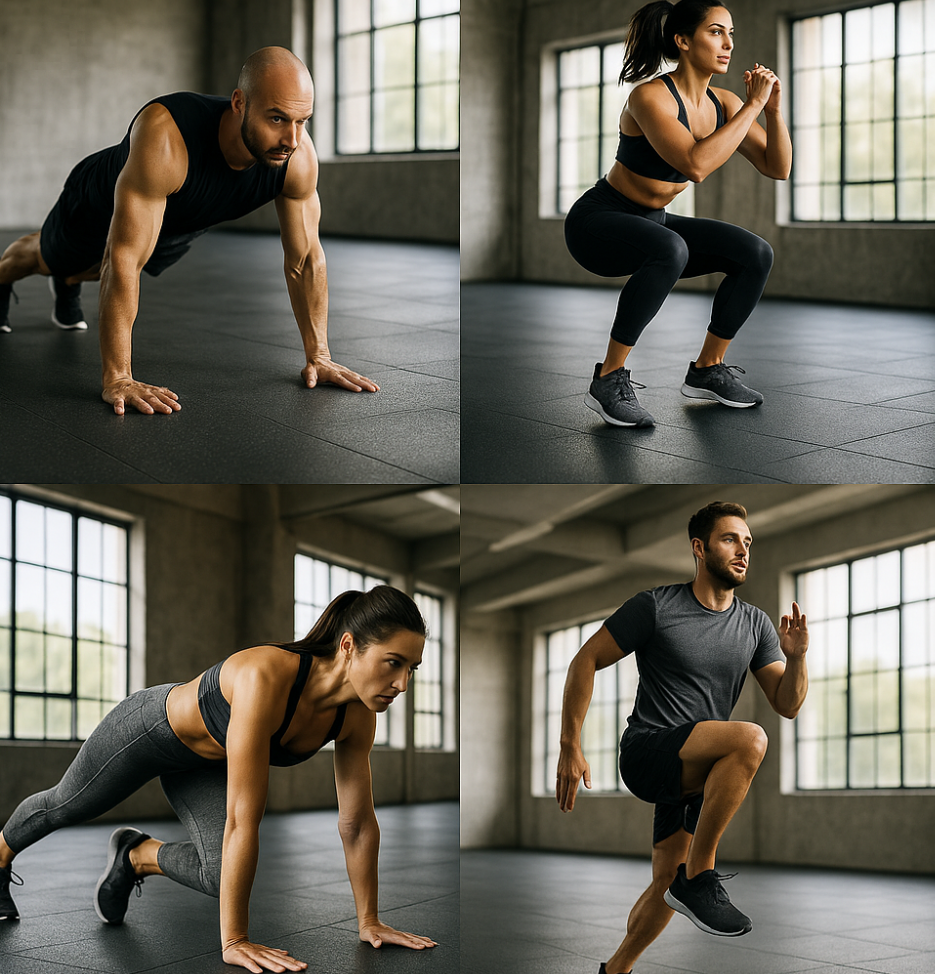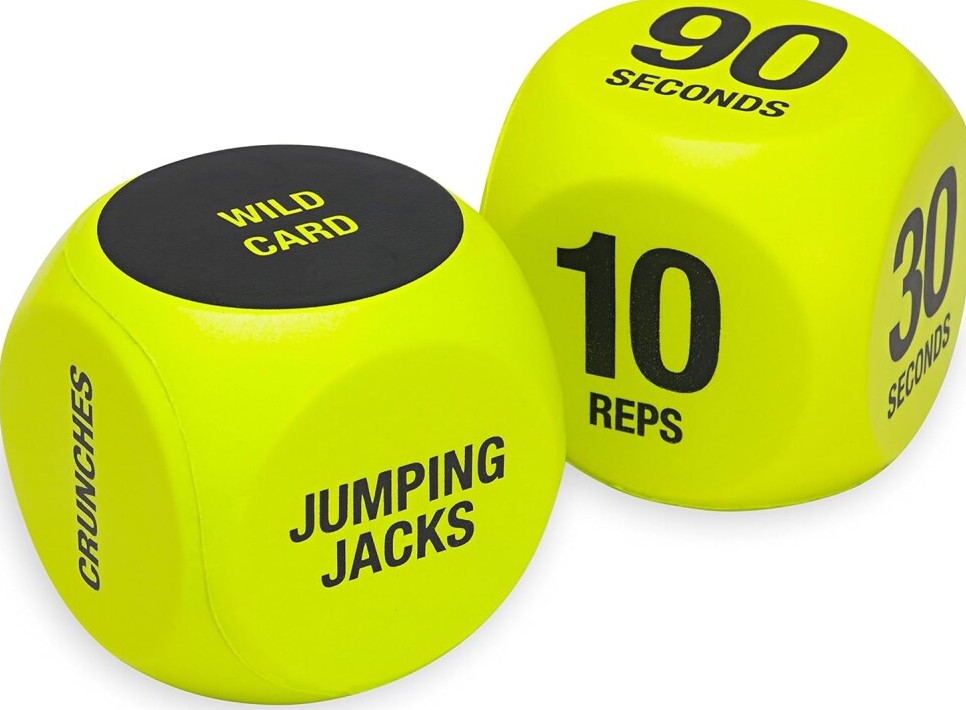 HIIT (High Intensity Interval Training) has picked up a lot of attention, and for good reason. I’ve noticed people, myself included, see results without slogging through hours of cardio. It’s fast, flexible, and gets your heart rate up in a way that’s honestly kind of addictive if you like a good challenge. But getting the most out of HIIT takes more than just pushing play on a workout video or going hard with random burpees. Knowing how HIIT works, setting up a smart structure, and mixing up your moves all help you make the most of your sweat sessions.
HIIT (High Intensity Interval Training) has picked up a lot of attention, and for good reason. I’ve noticed people, myself included, see results without slogging through hours of cardio. It’s fast, flexible, and gets your heart rate up in a way that’s honestly kind of addictive if you like a good challenge. But getting the most out of HIIT takes more than just pushing play on a workout video or going hard with random burpees. Knowing how HIIT works, setting up a smart structure, and mixing up your moves all help you make the most of your sweat sessions.
Whether you’re looking to get fitter, burn fat, or just save time at the gym, this guide lays out exactly how to use HIIT most effectively. If you’re new or just want ideas to shake up your current routine, I’ll cover practical details you can use today. Stick around to jump into the core techniques and find an approach that adapts to your workflow, no matter your level or goals.
Understanding How HIIT Works
At its core, HIIT is built on short bursts of intense exercise, followed by periods of rest or active recovery. You’re basically switching between pushing as hard as you can and taking it down a notch to catch your breath, then going all in again. These intervals set HIIT apart from steady, moderate workouts and help you achieve results with less total time spent exercising.
What Really Happens During HIIT?
- Jumps your heart rate up fast. You usually work at 80–95% of your max effort during the “work” sections, which is way above what’s typical in steady state cardio.
- Triggers the “afterburn effect.” Because you ramp up intensity, your body keeps burning calories long after the workout ends, which is officially called EPOC (excess post exercise oxygen consumption).
- Builds both strength and endurance. That’s what I really appreciate about it. Depending on the moves, you can work your muscles and boost your fitness at the same time.
When HIIT’s done right, you get major benefits in less time by stacking intensity with efficiency. You may find you hit your fitness goals much more quickly and keep your motivation high.
Setting Up an Effective HIIT Routine
Throwing together a few sprints or jump squats isn’t always enough. Good HIIT routines have a plan. Here’s what I recommend paying attention to if you want real results, not just getting really sweaty for twenty minutes. Start with a focus, map out each session, and reflect afterward to unlock even better progress next time.
Picking the Right Ratio: Work vs. Rest
- Work Periods: Go all out for 20–45 seconds. You want to feel breathless, but stay controlled.
- Rest or Active Recovery: Take 10–60 seconds, depending on your fitness. Shorter rests mean a tougher workout, while longer rests allow you to recover more fully and give it your all in the next interval.
I’ve found that classic ratios like 30 seconds on, 30 seconds off are great for beginners. As you gain experience, ramp up to 40/20 or 45/15 to push your limits in a safe way.
Session Length Matters
- Most HIIT sessions run from 10 to 30 minutes. There’s no need to go longer. Focus on quality and intensity, not just the clock.
How Often Should You Do HIIT?
- 2–4 times a week is a good sweet spot for recovery. Too much HIIT without rest and you risk burning out or getting injured, so listen to your body and balance high energy days with easier activities.
Warming Up: Don’t Skip It
Just five minutes of dynamic stretching, arm circles, or jumping jacks preps your body for high intensity. This is one piece nobody should skip. Even if the rest of your routine is short, warming up sets you up for great form and injury prevention.
Mixing Up Muscle Groups for Better Results
One of the best things about HIIT is its flexibility. You can target different muscle groups each session, which not only prevents boredom but gets you better results. Alternating upper body, lower body, and core focused intervals lets one area recover while another is working hard, so you can keep pushing strong through your whole session.
Why Alternating Muscles Works
- Reduces muscle fatigue: You won’t be as wiped out after the first round or two, and your form stays sharp, especially for beginners.
- Builds balanced strength: Hitting different muscle groups prevents overuse and keeps your whole body strong and supported.
- Makes HIIT adaptable: You can switch things up each session, keeping workouts fresh and fun so you don’t lose your spark.
Sample HIIT Structure with Mixed Muscle Groups
- Round 1: Lower Body – Squat jumps for 30 seconds
- Rest: 30 seconds
- Round 2: Upper Body – Pushups for 30 seconds
- Rest: 30 seconds
- Round 3: Cardio/Core – Mountain climbers for 30 seconds
- Rest: 30 seconds
- Repeat for 3–4 rounds
I often change up the exercise choices every session. Think lunges, burpees, tricep dips, bicycle crunches—whatever challenges you. As long as you’re switching muscle groups, you’ll get more out of every round and avoid tapping out too soon.
Tips for HIIT Success (and What to Avoid)
HIIT is super effective, but it’s not a magic shortcut if you skip the basics. A few mistakes can slow down your progress, or worse, lead to injury. Here’s what I’ve learned from tinkering with different classes, videos, and trainers.
Make Every Interval Count
- Go for short but intense effort. Dive in during work periods and don’t hold back. If you finish a work section not feeling challenged, crank up the intensity next round with bigger movements, faster pacing, or more advanced variations.
Form Still Matters
- No matter how fast you go, keep form your top priority. If your technique starts slipping, slow down, reset, and maintain good posture. You’ll get more out of each rep and stay safe.
Rest Means Rest
- Respect your rest window. Trying to cut out rest will just drop your performance and make you lose out on the true HIIT effect. Take a real breather, then attack the next set.
Avoid Repeating the Same Routine
- Mix things up by swapping exercises, changing your work/rest ratios, or increasing intensity each week. This keeps your body on its toes and helps prevent mental fatigue as well.
Don’t Overdo It
- HIIT can be tough on the body. Balance with rest days or gentler activities like yoga, walking, or cycling to help with recovery and injury prevention.
HIIT Troubleshooting and FAQs
I get super tired halfway through; what helps?
- Start with fewer rounds and a longer rest period. As you get fitter, shave seconds off the rest and add rounds.
- Check your nutrition and hydration; fueling up beforehand (light snack, water) keeps energy up.
Can I do HIIT if I’m a beginner?
- Absolutely. Begin with bodyweight moves and standard ratios (like 20 seconds work, 40 seconds rest). Focus on learning proper form first.
What equipment do I need?
- None needed! You can use just your bodyweight. To add a twist, try resistance bands, dumbbells, or kettlebells as you grow stronger.
Will HIIT help with weight loss?
- HIIT ramps up your calorie burn in short bouts, which helps with fat loss and maintaining muscle if you pair it with good nutrition.
Your Action Plan for Smarter HIIT Workouts
- Choose a HIIT interval structure that matches your fitness (start simple, like 30-second work and 30-second rest).
- Alternate muscle groups so you’re rested and ready for each round.
- Switch up exercises regularly to keep things fresh and get a full body challenge.
- Stick to 2–4 sessions per week, scattering in rest days for good measure.
- Focus on quality of movement, not just speed or the rep count.
Using HIIT well is about making every minute count. Mix up those muscle groups, be mindful of your rest, and stay consistent. Got a favorite HIIT move or combo? Share in the comments. I’d love to hear what takes your workout up a notch and keeps you coming back for more!
